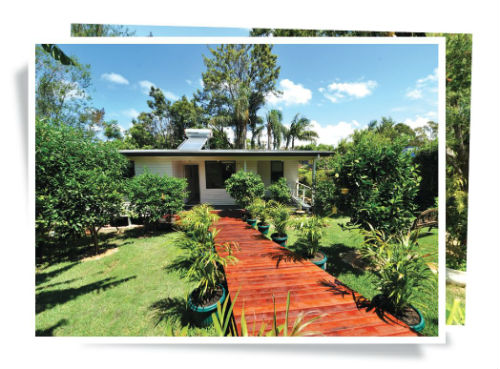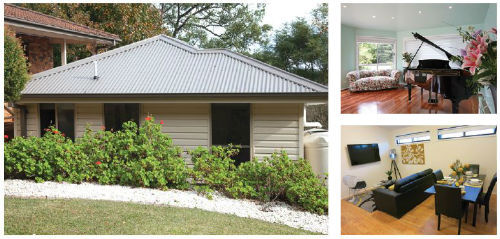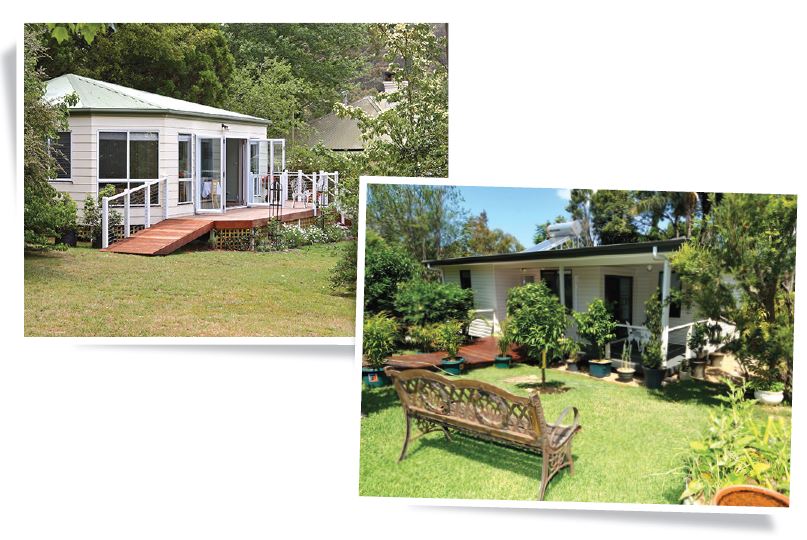If you're looking for ways to maximise the capital and cash flow of your properties, a humble granny flat might be just the ticket. Since the building restrictions around granny flats relaxed in 2009*, more and more investors are seeing the power of these versatile little houses.
The heated NSW market has seen the biggest boom in the construction of granny flats in recent years. The demand for affordable rentals has created an opportunity for investors to capitalise on their idle backyard space, says Mark Moumdjian, chief operations manager of Ian Cubitt’s Classic Home Improvements.
“When done correctly, a granny flat can easily yield a 6–8% return on just a small investment,” says Moumdjian. “They are an incredible cash flow opportunity for a property investor.”
 What is a granny flat?
What is a granny flat?
A granny flat is a self-contained secondary dwelling on a property. Originally, they were built for accommodating relatives (hence the term ‘granny’), but now it’s investors who are pushing the renewed drive in construction.
These compact homes can add quick value and return for a number
of reasons:
• For a low cost, granny flats can be added to an existing investment property to increase value and yield
 • They can be built on your own residence, to earn income from your PPOR
• They can be built on your own residence, to earn income from your PPOR
• Downsizers can build them in their own backyard, move in, and rent out the main house.
In terms of land requirements, Moumdjian says they’re versatile enough to fi t virtually any block, as long as it complies with local council regulations. “In NSW, for example, the minimum land size is 450m2, and the granny fl at must be a maximum of 60m2,” Moumdjian explains.
“Granny flats come in one, two or three bedrooms, and we can customise them so they fit your unique block and the main residence.”
*Queensland, Victoria and South Australia did not overhaul their legislation in 2009. This is signifi cant for property investors because some councils in these states still don’t allow granny flats to be rented for profi t. Your first step should always be to check your local council’s legal regulations and requirements.
Will a granny flat work for you?
Granny flats are economical and versatile enough to work well in a variety of markets, says Moumdjian, although they perform particularly well in high-density suburbs located near capital cities.
“In NSW, rentals are becoming harder to come by, and plenty of council areas like Penrith and Blacktown have good-sized blocks
of land that makes them hot spots for granny flats,” he says.
“When done correctly, a granny flat can easily yield a 6-8% return on a small investment”
“We build 300 granny flats every year, and a lot of them are out in regional suburbs like Bathurst and Goulburn. They perform really well in terms of yield, too.”
Investors must test two primary factors: the logistical feasibility of a granny flat on the property; and the temperature of the local market.
Investors should consider:
• Council regulations and
restrictions
• The value-adding potential for their individual property
• Demand in the rental market
• The median yield for granny flats in the suburb.
Networking with local real estate agents and granny flat builders will give you a feel for what renters really think about granny flats and whether they would want to live in one.
You’ll also need to work out if the cost of building a granny flat would be better served by improving the existing dwelling instead.
Granny flats talk the talk, but do they walk the walk?
These investors, who built their granny flats with Classic Home Improvements, would say yes.
INVESTOR #1: NOAL’S YIELD BOOSTED TO 13%
Suburb: Marayong, NSW
Original property value: $390,000
Granny flat cost: $95,298
New property value after 6 months: $650,000
Total capital growth: $260,000
Weekly rental income: $700
Yield (based on property cost): 13%
INVESTOR #2: TANIA’S PROPERTY VALUE DOUBLES
Suburb: Blackett, NSW
Original property value: $285,000
Granny flat cost: $124,740
New property value after 6 months: $525,000
Total capital growth: $240,000
Rental income per week: $630
Yield (based on property cost): 8%
1. Apply for a Section 149 Planning Certificate to check the zoning and planning restrictions of your property. You will need to include this in your application.
2. Have a granny flat builder or architect draw up the building plans and specifications of your granny flat design. It must meet council requirements such as square metreage, setback and minimum lot size.
3. Check whether you can apply for a Complying Development Certificate. If so, you can use a private certifier who can approve the plans in 20 days.
4. If your plan doesn’t meet the criteria for a complying development – which can include factors such as a flood zone location or an attached granny flat rather than detached – you may have to apply for a standard Development Approval through the local council.
When it comes to sale time, granny flats can widen the pool of potential buyers. “When you build another dwelling on it, buyers are drawn to the dual income opportunity, which increases its value,” he explains.
In addition, granny flats also attract families looking for dual living areas, and buyers who want a studio or space from which to run a business.

Specialist granny fl at builders will construct the dwelling on-site, with the same quality of construction as a brand new home, for just a fraction of the cost. And while prefabricated kit homes are available for as little as $20,000, the lower quality is likely to show.
As a guideline, granny flat prices from Classic Home Improvements range from $82,945 for a one-bedroom granny flat, through to $132,240 for three bedrooms. These costs are for a move-in ready dwelling, with inclusions ranging from kitchen appliances to a letterbox.
“You can choose what your granny flat will look like, both inside and out,” says Moumdjian.
“There’s also the option to build a single or double garage underneath the granny flat, which doesn’t count in the maximum floor size. There are plenty of custom choices available.”
How to build a granny flat
Dedicated granny flat builders will guide you through the process from start to finish, Moumdjian explains.
“We have full-sized model showrooms that clients can walk through so they can see and feel the granny flat inside and out,” he says.
“Then a consultant will visit their site free of charge to perform a feasibility test, so that we can find any hidden costs, like whether services need to be upgraded to handle the extra load.” Once you have your design in place and a price locked in, you can apply for approval through either a private certifier or a Development Application through the local council.
In 12 to 16 weeks, the new compact home is ready for tenants.
“People are more educated about granny flats now, and they see how fantastic the finished products are,” says Moumdjian.
“They make good financial sense: you can put money in the bank and get 2% interest a year, or you build a granny flat for $120,000 and return 6–8%.”
